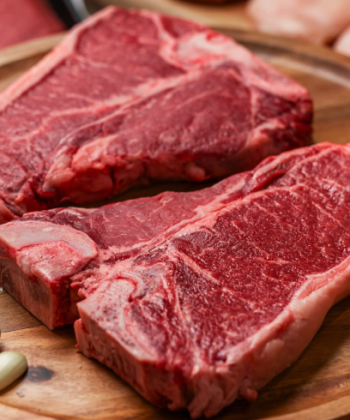Restaurants are a fascinating industry, as complex, fast-moving, and stressful as few other businesses are, working almost around the clock at insane speeds while having to maintain a level of quality that can never dip because once it does, the whole restaurant might collapse. Every detail matters, from the cooks to the cutlery they use, to how quick and nimble the waiters and waitresses are, to the very ingredients that go into the food. Every detail is a piece of the puzzle that makes up the whole. It is a small wonder then that few restaurants stay in business for long, as the fewest of people can handle that non-stop pressure for long. Paying attention to every detail is necessary, so today we are going to take a look at why something as seemingly minor as egg quality can matter so much.
Green Pastures
Being able to roam freely matters to an animal, which in turn has an effect on their meat, eggs, milk, or whatever. If you buy barn laid eggs that come from chickens that are not caged, not only will they taste and look different, but they will also have an actual impact on your health. Animals that live a healthy life, and can move freely will not suffer the disease burden of animals raised in confined, unnatural conditions and will not need to be constantly fed antibiotics and other pharmaceuticals to stay healthy enough to keep laying eggs and so on. This is doubly pertinent because the use of antibiotics in animals can have serious human health effects.
Temperature Monitoring
In a restaurant, it is vital that everyone on the staff knows the basics, like the importance of storing foods and cooking food to the proper temperatures. Is the boss giving them the right tools to do so? Bluetooth thermometers, for example, are a simple but very effective technology that lets you monitor temperatures in your kitchens. Some restaurants also employ real-time tracking devices in their walk-in freezers to keep an eye on their temperatures. If temperatures go above or below the ideal, said devices will automatically notify management so the problem can be solved before any of the food is compromised. Tech solutions like this can help make sure that proper temperatures are being maintained and that all the equipment is working as it should. Through this, you reduce food waste, prevent illnesses from bad food, and avoid contamination.
Grass
The quality of the food the animals consume is vital, as it directly impacts the egg and meat quality you then consume. Quality food matters, and yes, it may be a little more expensive, which in turn makes the eggs more expensive, but cheap food is a false economy, and buying cheap ends up costing you somewhere else, and perhaps more seriously too. This cost is not material, and ends up being charged to the environment, your health and well-being, and the welfare of the animals. Cheap eggs will not only push the farmer to the wall financially, but in turn, they will try to push the production levels of their chickens to the very limits, making them suffer as a result, which again will affect their eggs too, creating a perpetual cycle.
The Grading System
The USDA grading system covers the basic elements of egg quality, a concept that many people are familiar with, but the fewest know what the grades mean. The eggs are graded for both exterior and interior quality. The evaluation considers shape, cleanliness, texture, and soundness, and A and AA are the only grades you will find in stores. As a consumer, you are never going to see a grade B egg; these go to bakers and other food processors, while “dirty” eggs cannot be sold for normal consumption.
Interior Quality
This is all pretty technical, but one of the most important measures of egg quality is the albumen’s condition. When you break an egg into a frying pan, you want to see a round yolk in the center, which is surrounded by thick albumen. Now if the yolk looks flattened and is pretty off-center, with the albumen spreading over a large area with a wide pool of liquid, you automatically know the egg is not fresh. Grade AA eggs, when properly stored in a carton and in a home fridge, will deteriorate to grade A in more or less a week, and in another 5 weeks to grade B, but eggs at room temperature will lose their quality much more rapidly.
The Yolk
The quality of the yolk depends on several factors, including firmness, texture, appearance, and smell. As previously mentioned, the yolk should be firm and round, and as it ages, it absorbs water from the albumen, enlarging in the process, and degrading the vitelline membrane, which causes a flattened top and an overall not-round shape. These weakened yolks often rupture in the frying pan. Now this may surprise you, but yolk color usually has nothing to do with its quality and is just indicative of the hen’s diet. The color is affected by yellow-orange plant pigments called xanthophyllis. So, for example, hens feeding on alfalfa meal and yellow corn will lay eggs with darker yolks than hens eating milo, white corn, barley, or wheat. Also, interestingly enough, yolk color is similar to shell color, where you will find different cultures having different preferences, with their own aesthetic choices, if you will.
We are what we eat, and in today’s world where everything has been reprogrammed, changed, and “enhanced” by pharmaceuticals and many animals living in miserable conditions, it is important to be careful. No one wants to spend money, especially when “cheaper” options exist, but especially when it comes to food, saving money may end up costing you somewhere else, and worse. Eggs are part of our staple diet, so take some time to choose the quality ones that came from hens that were raised and fed well.


